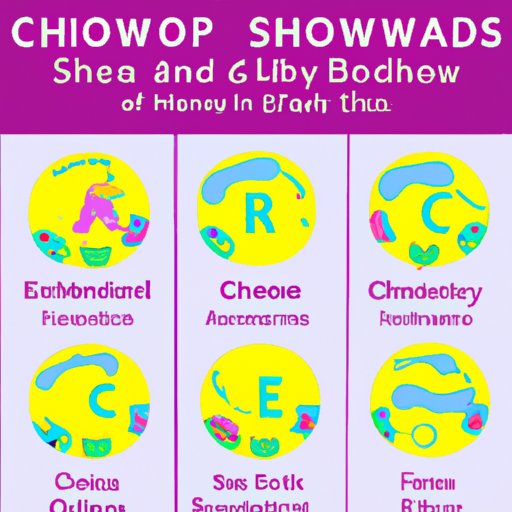Introduction
Phonological awareness, a term relating to a child’s ability to understand the sound structure of language, is crucial to the development of early reading and writing skills. Phonological awareness is the foundation for literacy, and it impacts every aspect of reading and writing. This article aims to define phonological awareness and its importance in early childhood education, offer tips and activities for parents to develop their child’s phonological awareness skills, provide examples of phonological awareness activities that teachers can use, and list five fun activities to improve phonological awareness in kids.
Understanding Phonological Awareness: What It Is and How It Impacts Reading and Writing
Phonological awareness is the ability to recognize and manipulate the sound structure of language. It covers a range of skills that are essential in the development of early reading and writing skills. These skills include identifying and producing syllables, phonemes, rhymes, understanding the rhythm and intonation of spoken language, and phonemic segmentation, the ability to break words down into individual sounds.
Phonological awareness plays a pivotal role in the development of early literacy skills. When children learn to read, they rely on their knowledge of phonological awareness to decode words. Children with poor phonological awareness skills are likely to struggle with both reading and writing. Therefore, phonological awareness intervention is critical for children struggling with reading and writing difficulties.
Breaking Down Phonological Awareness: Syllables, Rhymes, and Phonemes
A child’s phonological awareness skills can be broken down into a few key areas. These include syllables, rhymes, and phonemes.
Syllables: A syllable is a unit of sound that contains one vowel sound (e.g., dog has one syllable, while apple has two syllables).
Rhymes: Rhyming is the ability to recognize and produce words that sound the same at the end (e.g., cat, hat, mat).
Phonemes: Phonemes are the smallest units of sound in the English language. The English language has 44 phonemes that make up words. For example, the word “cat” is made up of three phonemes: /k/ /a/ /t/.
The development of these skills lays a foundation for early literacy skills. Activities to improve these skills can include singing songs, reciting nursery rhymes, and playing word games with children.
Phonological Awareness for Parents: How to Help Your Child Develop Language and Reading Skills
Parents play an essential role in helping their child develop early phonological awareness skills. Here are some tips for parents:
- Read to your child daily. Reading exposes your child to different sounds and vocabulary, which aids in language and phonological development.
- Sing songs and nursery rhymes with your child. This allows them to listen to sounds and patterns of language while also improving their memory skills.
- Encourage play activities that promote language and speech development, e.g., playing games that involve identifying and categorizing objects like “I Spy.”
- Talk to your child about phonemes and syllables. For example, break a word down into phonemes or identify syllables while reading a book aloud.
- Play word games with your child, e.g., sound matching games where your child matches the word to the sound it begins with, or word jumbles where you mix up the letters of a word for your child to unscramble.
Building Blocks of Literacy: Phonological Awareness in the Classroom
Phonological awareness is a crucial component of early literacy skills; therefore, teachers should incorporate phonological awareness activities into their classrooms. Here are some examples of phonological awareness activities that teachers can use:
- Phonemic segmentation games where students break down words into individual phonemes
- Word association activities where students associate words with specific sounds
- Rhyming activities that involve identifying, matching, and producing rhyming words
- Alliteration activities where students identify words with the same beginning or ending sound
Phonological awareness activities should be engaging, interactive, and designed for different learning styles to cater to individual student needs.
5 Fun Activities to Improve Phonological Awareness in Kids
Here are five fun activities that parents and teachers can use to improve phonological awareness in kids:
- Rhyme Time: Create a list of rhyming words and challenge children to come up with more rhyming words for each word on the list.
- Syllable Scavenger Hunt: Take a walk outside and challenge kids to find objects with a specific number of syllables.
- Phoneme Toss: Create a game where children toss a ball to each other, taking turns saying a word that begins with the same phoneme as the previous word.
- Story Sequencing: Draw several pictures representing different parts of a story and mix them up. Children have to sequence the pictures and recite the story in order.
- Sound Hopscotch: Draw a hopscotch board and add a sound instead of a number in each square, then have the child make a word that begins with that sound as they jump on each square.
Conclusion
Phonological awareness is the foundation for early reading and writing skills, and its development should be a priority in early childhood education. Parents can actively support their child’s phonological awareness through daily reading, word games, and playful language activities. Teachers can incorporate phonological awareness activities into their lesson plans to improve early literacy skills. By employing these strategies, parents and teachers can help children develop the building blocks of their literacy skills, set them on the path to becoming confident readers, and writers.
